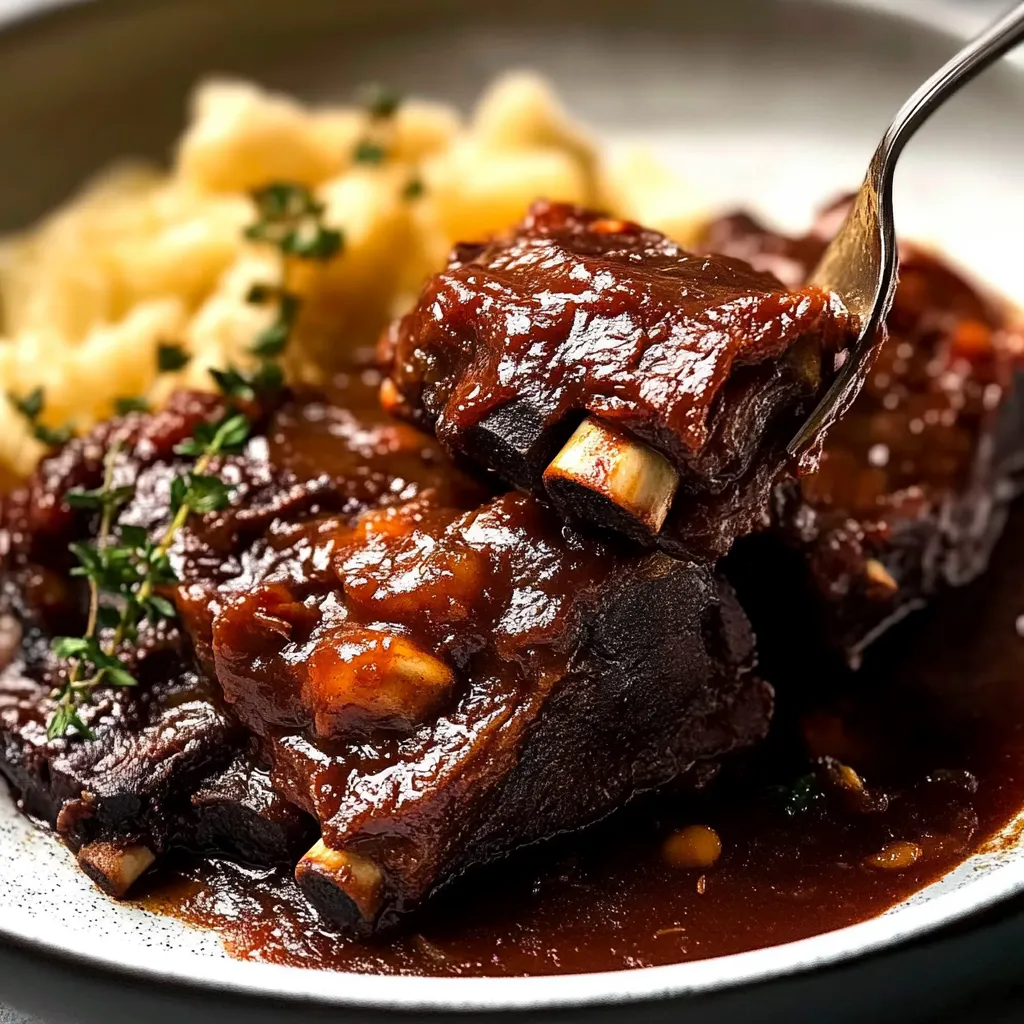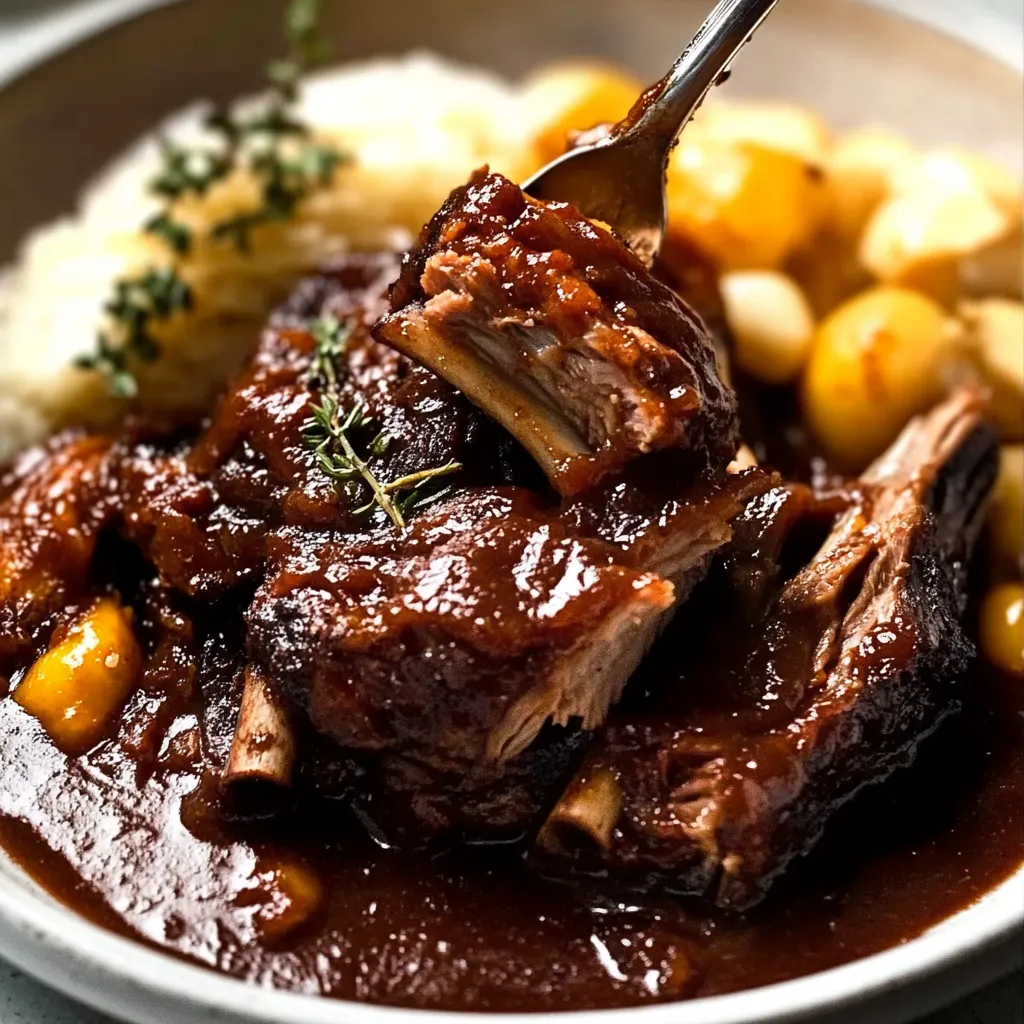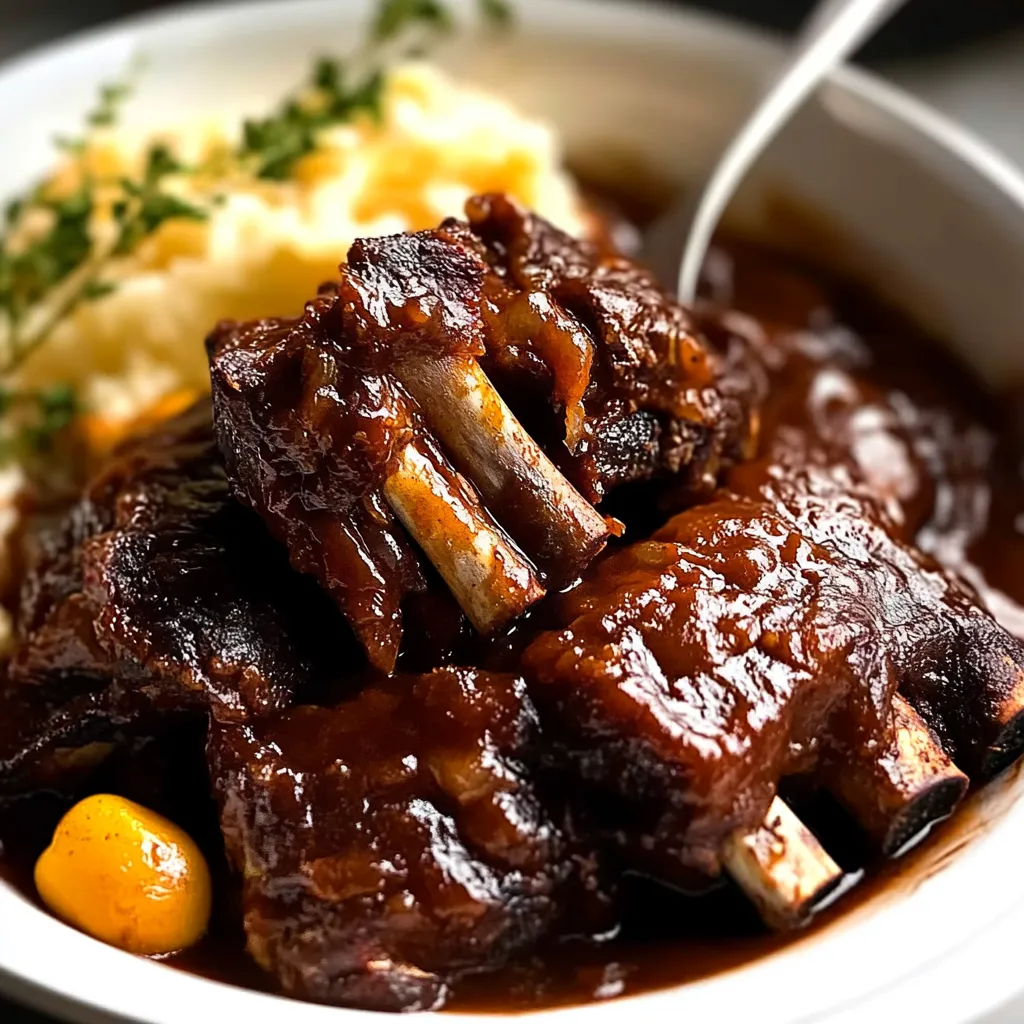 Pin it
Pin it
Getting perfect BBQ beef ribs comes down to taking your time. After trying tons of different ways to cook them, I've found that cooking them slow until they're super tender, then adding a sticky glaze at the end makes them absolutely amazing. Whenever my family gets together, this is my go-to dish - everyone starts getting excited as soon as they smell that sweet-savory BBQ scent filling up the house.
My brother-in-law thinks he knows everything about BBQ. Last Christmas, he couldn't believe these weren't made in a smoker when he tasted them. He asks me how to make them every single time he stops by now.
Key Ingredients and Shopping Advice
- Beef Short Ribs: Go for ribs with plenty of marbling and good meat. I always ask the butcher to give me ones that are at least 2 inches thick.
- Brown Sugar: Using dark brown sugar gives you richer flavor in both the rub and sauce.
- Worcestershire Sauce: This adds that deep savory taste. I like to add a bit more right at the end.
- Garlic: I put fresh garlic in the sauce and garlic powder in the rub to build up the flavor.
- Cider Vinegar: This brings some tang that works really well with the fatty meat and sweet sauce.
Foolproof Rib Cooking Guide
- Getting Ready (20 minutes):
- Wipe the ribs totally dry with paper towels. Take off the silver skin from the back if it's there. Let the meat warm up a bit for more even cooking. While waiting, mix up your dry rub ingredients.
- Adding Flavor (15 minutes):
- Rub the spices all over the meat, pressing hard so they stick well. Let the ribs sit with the rub while you make your sauce. Stir the sauce ingredients until they're completely mixed.
- The Slow Cook Method (3-3.5 hours):
- Put your ribs in a baking dish, cover them tightly with foil, and cook at 275°F. After 3 hours, check if they're tender enough.
 Pin it
Pin it
The first time I tried making these ribs, I learned why temperature matters so much. I tried to hurry things up with higher heat and ended up with tough meat. Now I know better - you gotta go low and slow.
Creating That Perfect Sticky Coating
This part really makes the difference. After you take the foil off, that sticky, caramelized outer layer starts to form, making an awesome contrast with the tender meat inside. I watch super carefully during this part, adding more sauce every 5 minutes until it looks just right.
Preparing in Advance
These ribs actually taste even better the day after you make them. When I'm having people over, I cook them a day early and warm them up slowly, adding more sauce as they heat. The flavors get even better overnight, and I don't have to stress about cooking everything the same day.
 Pin it
Pin it
Checking If They're Done
It took me a while to figure out exactly when ribs are perfectly cooked. Now I know to stick a fork in - you want some resistance but the meat should give way pretty easily without falling apart completely. Finding that sweet spot comes with practice.
Growing Your Sauce Game
I've worked on my BBQ sauce recipe for years. What started as a simple mix now has all sorts of flavor from things like a bit of coffee for richness and some smoked paprika for that hint of smokiness. All the best BBQ cooks have their secret ingredients - these are the ones I swear by!
You can make these ribs for a regular Sunday dinner or save them for something special - either way, they'll probably become one of your favorite things to cook. There's something really special about the mix of juicy, tender meat with that sticky, flavorful sauce. Just be ready for everyone to ask you to make them again!
Frequently Asked Questions
- → What makes these ribs so tender?
The low and slow cooking process allows the connective tissues in the meat to break down, making the ribs melt-in-your-mouth tender.
- → Can I customize the BBQ sauce?
Absolutely! Feel free to adjust the sweetness, spice level, or add additional ingredients like coffee, smoked paprika, or honey to make it your own.
- → What's the best way to reheat these ribs?
Place the ribs in a baking dish, cover them tightly with foil, and reheat in a 275°F oven until warmed through to maintain tenderness.
- → How do I avoid overcooking the ribs?
Be sure to check for doneness after the initial cooking time. The meat should be tender but not completely falling apart at the stage before glazing.
- → Can I use a different cut of meat for this method?
Yes, pork ribs or even lamb ribs can work well with the same slow-cooking process. Adjust cooking times based on the type and size of the ribs.
